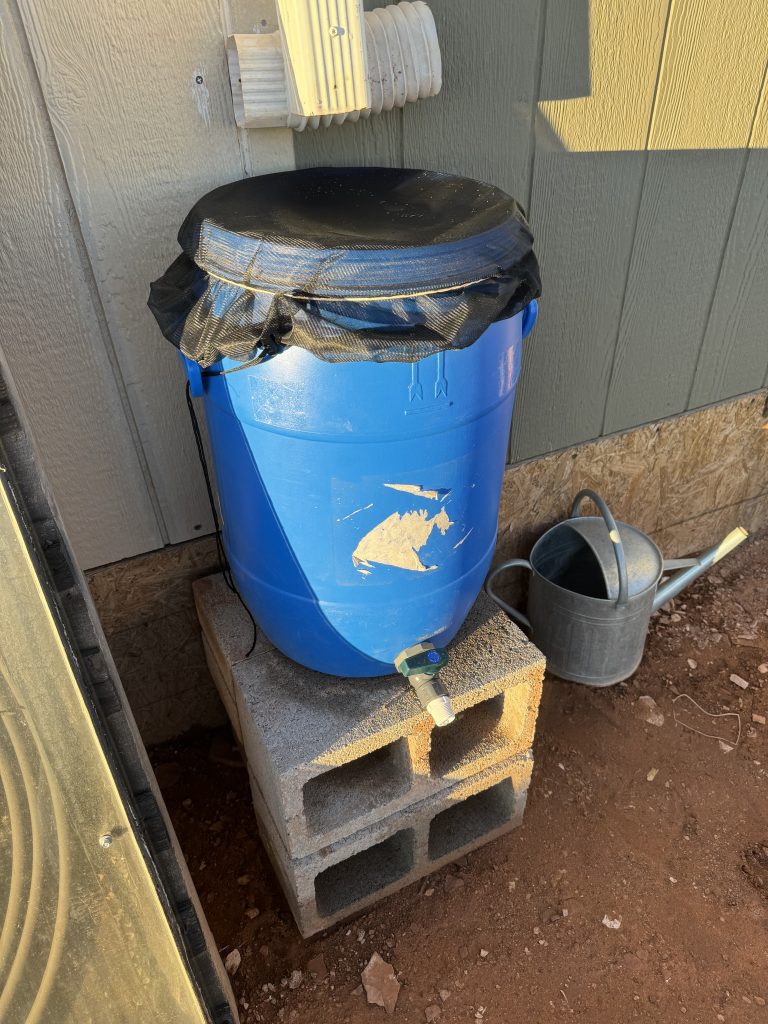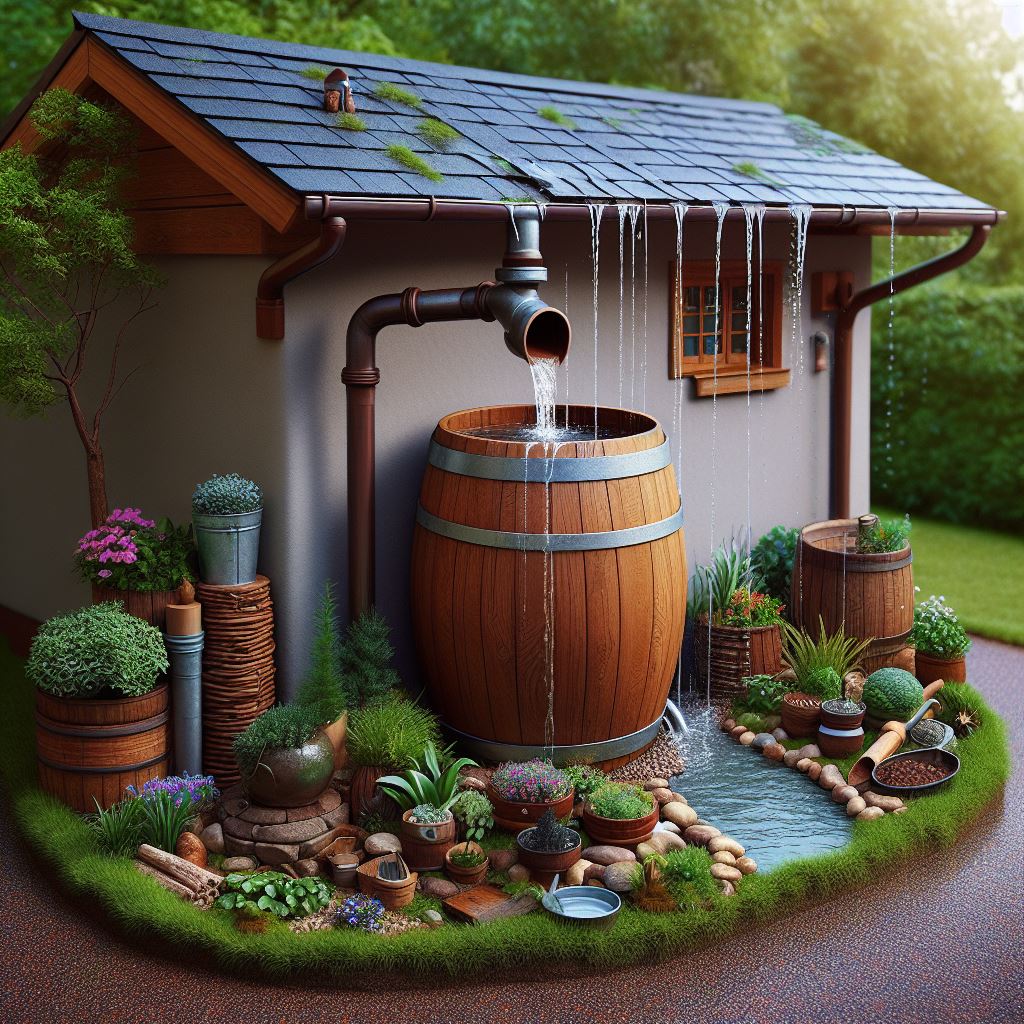Rainwater Catchment
What exactly is rainwater harvesting or catchment?
Water catchment is collecting rain water also known as rainwater harvesting. Catchment is the easiest to get and it costs nothing except for the materials used to catch it, store it and be able to use it.
No matter the size or shape, a rainwater collection tank should ideally have all these common elements:
- An inlet or downspout to direct the rainwater into the tank, generally on top but covered with a screen.
- An outlet that allows you to dispense and use the collected rainwater, usually near the bottom. For large tanks, a hose bib that you can connect a hose to is ideal.
- Made of a non-transparent material that does not allow sunlight through, unless you can completely cover it with a tarp (or paint) to block the sunlight. Sunlight + Water = Algae.
- Have fine-mesh screens securely in place over all openings to prevent the entry of insects, pests, or debris.
While water catchment systems are relatively cheap to make it’s only good when it rains. If you’re in a drought this doesn’t do any good for now but is always good to have setup as a just in case. Remember to check with your local county office to see if water catchment is legal.
What Size Rainwater Tank Should I Get?
The answer to this question depends on several things, including what you intend to use the rainwater for, and perhaps most importantly: your climate. If you get frequent rain throughout the year, you can get by with fewer and smaller tanks – such as average 55-gallon drums. As you use the water, the tanks are able to refill more often with periodic rain.
In comparison, some places have a “rainy season” with otherwise dry weather the rest of the year. For example, it mostly only rains during the monsoon season here in northern Arizona. Therefore, we need enough tank capacity to catch and store as much rainwater as possible during our short 2 month rainy season – to last until next monsoon. We would have to harvest as much as we can to last, possibly a few 55 gallon drums or a large 330 gallon water holding tank.
Take Advantage of Gravity
If you look through images of rainwater collection systems, you may notice many smaller tanks are elevated on a sturdy, level surface.
Most tanks have a tap or spigot at the bottom. In order to fill a watering can or bucket, you need some space below that tap to fit the container. Plan to elevate your tank at least slightly if you don’t intend to use a pump and have a fairly small tank.
If a small rainwater tank sits directly on the ground, you likely would not be able to connect a hose to a tap at the bottom and get enough pressure to fill containers as the hose would have to go upwards to get into a container. The weak water pressure will not be able to overcome the force of gravity, or will trickle very slowly.
Remember to only collect rainwater if it is legal in the county you reside, be sure to check your local laws before setting your rainwater catchment system up.
Here’s a simple one I made using a small 20 gallon barrel I had used for chicken feed at one time, a mesh drawstring netting and a spigot. (Mesh covering and spigot purchased on Temu). Total cost to make was around $20. I plan to make a few more, especially before monsoon season hits however, I’ve filled this one up a few times and used the water to give to the animals. With snow and rain the past few weeks, it was easy to collect. Remember for me, I had to use the gravity feed method so I raised mine up on 2 cinderblocks to allow me access to the spigot.






1 comment